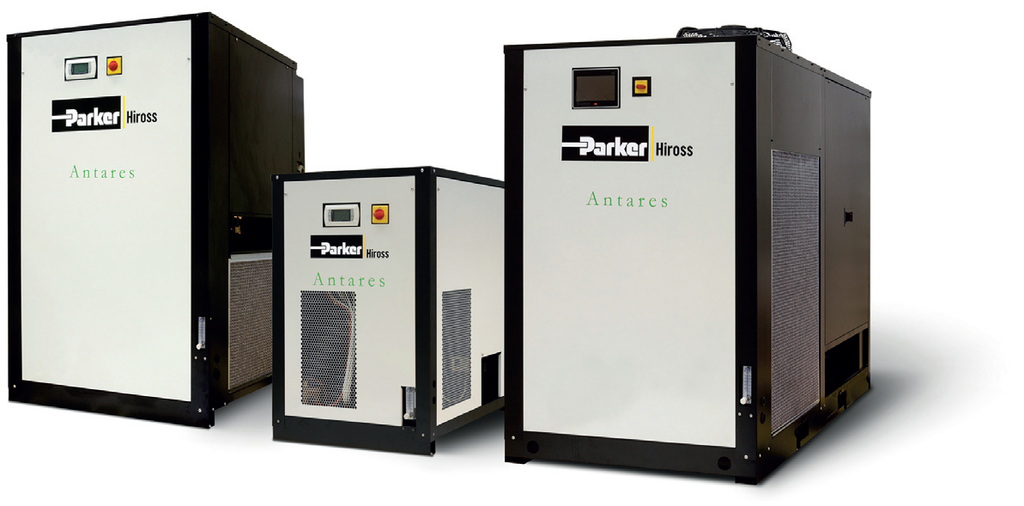

|
Edward Lowton
Editor |


|
ARTICLE
Which dryer technology?
14 August 2014
Mark White, Market Development Manager - Industrial at Parker discusses compressed air drying solutions

The need for clean, dry compressed air in any manufacturing industry is unquestionable. Contaminated compressed air can have a direct impact on a company’s productivity, product quality and brand image.
Why so many technologies?
At the heart of any purification system is the compressed air dryer. Selection of this piece of equipment is not easy as there are many technologies to choose from. The reality is "the perfect dryer technology” that suits all industries, applications, dewpoint’s, pressures and flow rates just doesn’t exist.
Each drying technology available has its advantages and disadvantages and must be selected accordingly.
Market trends
As all manufacturing industries strive to reduce operating costs, especially electricity, selecting a compressed air dryer now seems simple; just find the one with the lowest running costs; however it’s not always that easy, as many other questions need to be answered. Does that low running cost dryer deliver the air quality required? What about reliability and maintenance costs? Is the capital budget available? How long does it take to pay back the investment? Is that technology suitable for the industry or application?
Parker – Clean, Dry Compressed Air Solutions Parker
domnick hunter, Hiross and Zander Divisions have a combined 140 years of experience in filtration and drying of compressed air. Using this extensive knowledge, coupled with their understanding of the individual needs of compressed air users across varying industries and applications Parker have assembled a portfolio of high efficiency, drying technologies to suit every dewpoint requirement, every flow rate, every pressure, every industry and application.
Antares (ATT) Tandem Dryers
The combination of refrigeration and externally heated purge adsorption dryer technology provides a low energy consumption dryer which provides selectable dewpoint’s of - 70oC to +5oC from a dryer with a small, compact footprint.
Ideally suited for use in general industrial applications, Antares can provide even greater energy savings where negative dewpoint’s are not always required but external air receivers and piping dictate their use.
Pre-cooling the air reduces the size of the adsorption stage, significantly increasing its performance whilst reducing its running costs. With the inclusion of an optional by-pass, Antares can operate as a refrigeration dryer in spring and summer and deliver adsorption dryer dewpoint’s when they are needed during autumn and winter months.
Antares Key Benefits:
• 60% lower operating costs compared to traditional twin tower heatless dryers and 30% lower than heat regenerative adsorption dryers• Low regeneration air requirement provides increased volume of air for process use
• Smaller desiccant volume results in reduced maintenance costs
• Exempt from pressure vessel inspections
• Consistent dewpoint performance - no dewpoint peaks from inconsistent bed cooling
• By-pass option allows seasonal energy savings
• Energy management system included as standard - Ensures regeneration profile exactly matches water removed
• Compact overall dimensions – Small footprint - Space saving
MORE FROM THIS COMPANY
- Broader conductive materials array
- Cutting energy consumption
- Compressed air systems: Efficiency matters
- AC drives with power ratings to 450kW
- Closed-loop capabilities
- Helping cut energy consumption
- Sochi support
- Video highlights capabilities and products
- Enhanced programming capabilities
- Latest firmware
RELATED ARTICLES
- Food and beverage grade air: Best practice guidelines
- Efficient compressed air generation – and heat for free
- Controlling water contamination
- The changing face of compressed air specification
- Ensuring that safety is paramount
- Trade association: Membership gains
- Training initiatives: An air of confidence
- The ongoing need to compress energy usage
- Bacteria and condensate
- Quick-win savings: Potential pitfalls
OTHER ARTICLES IN THIS SECTION

















